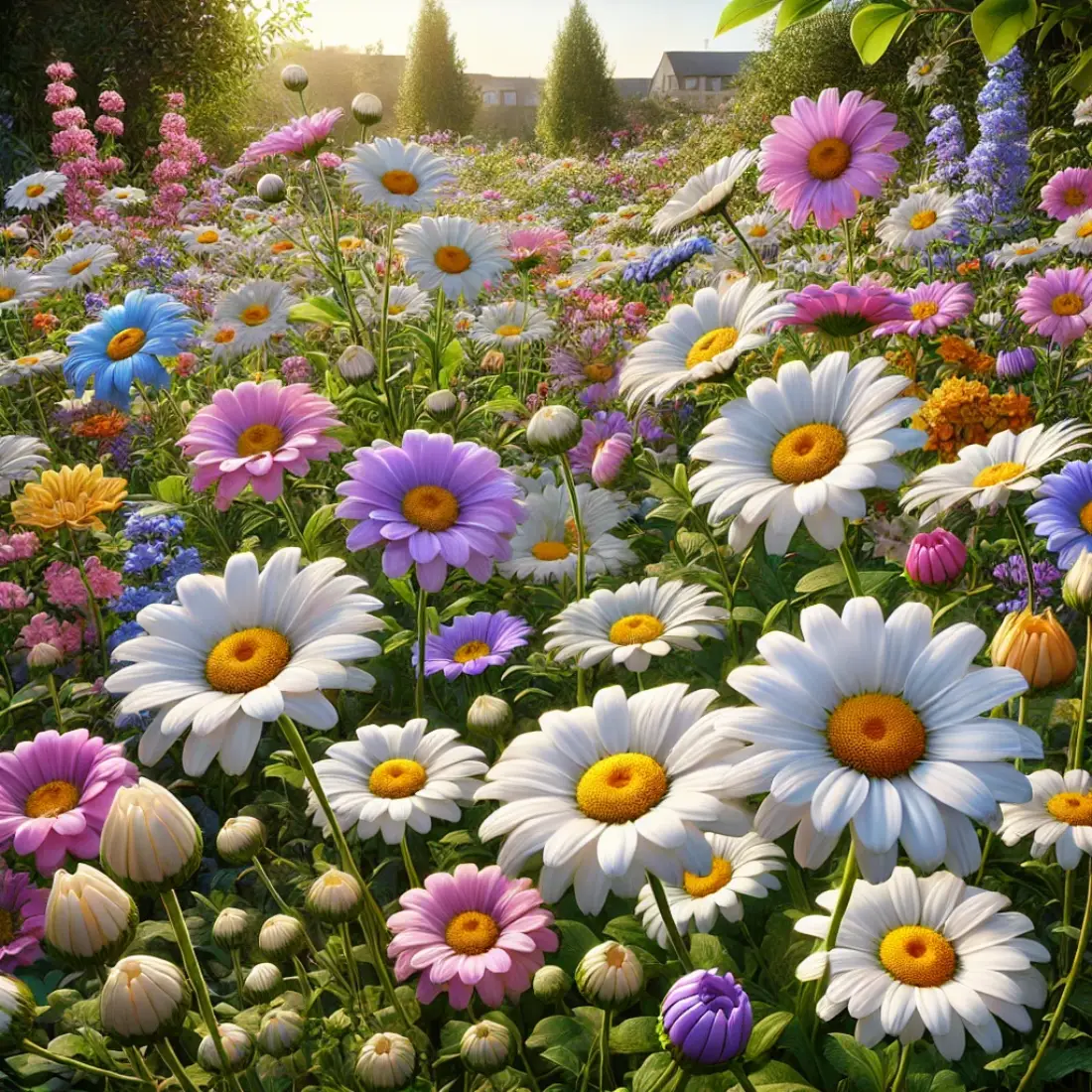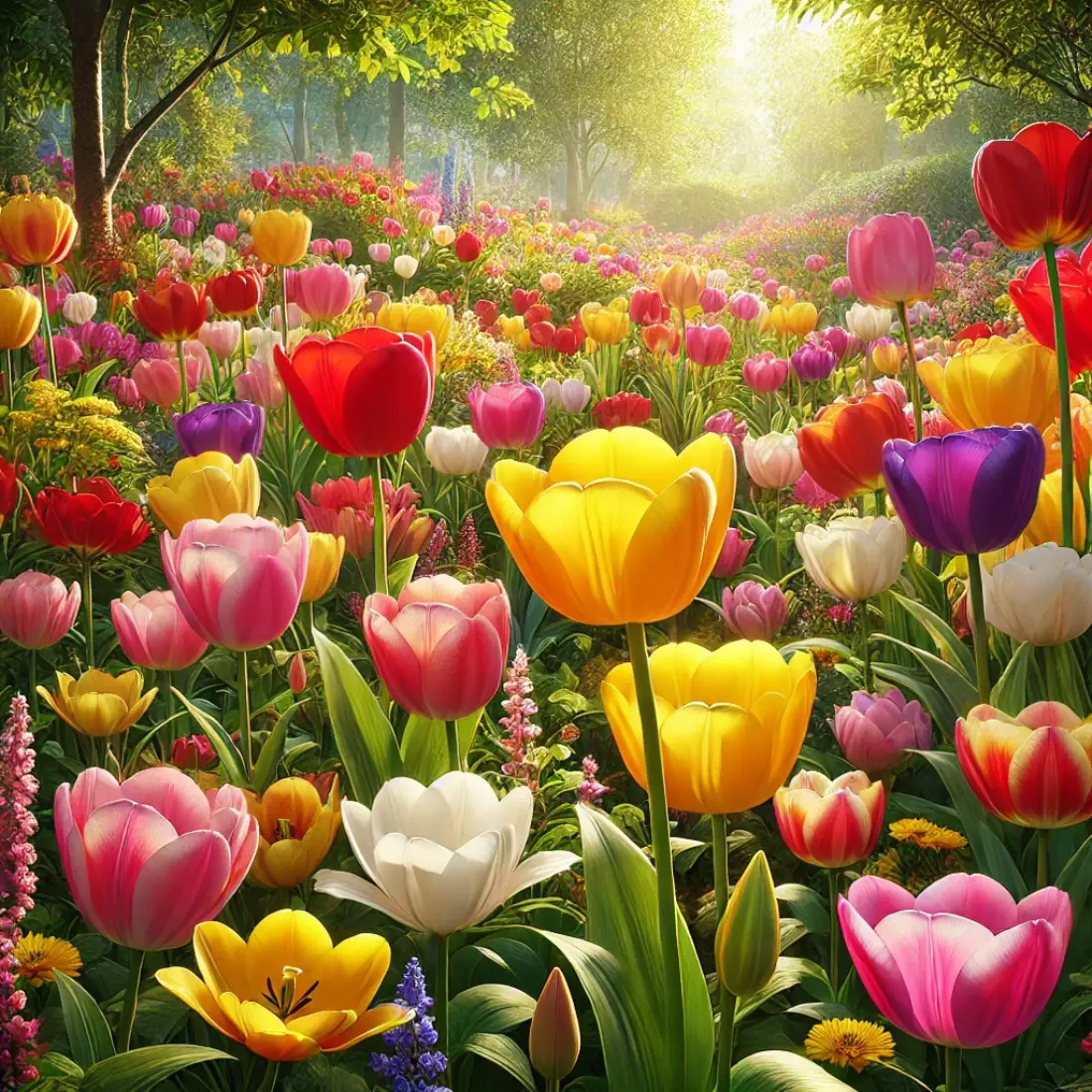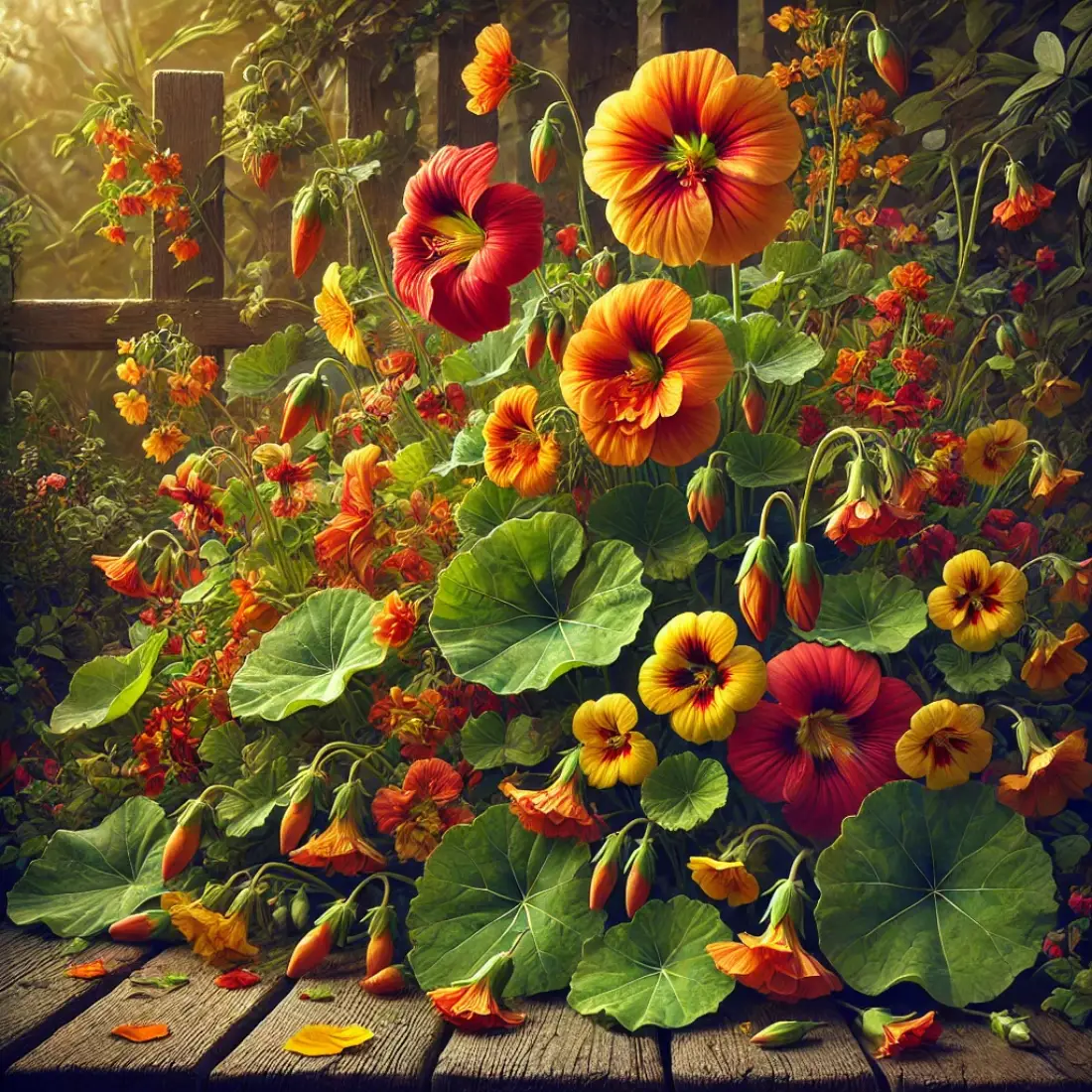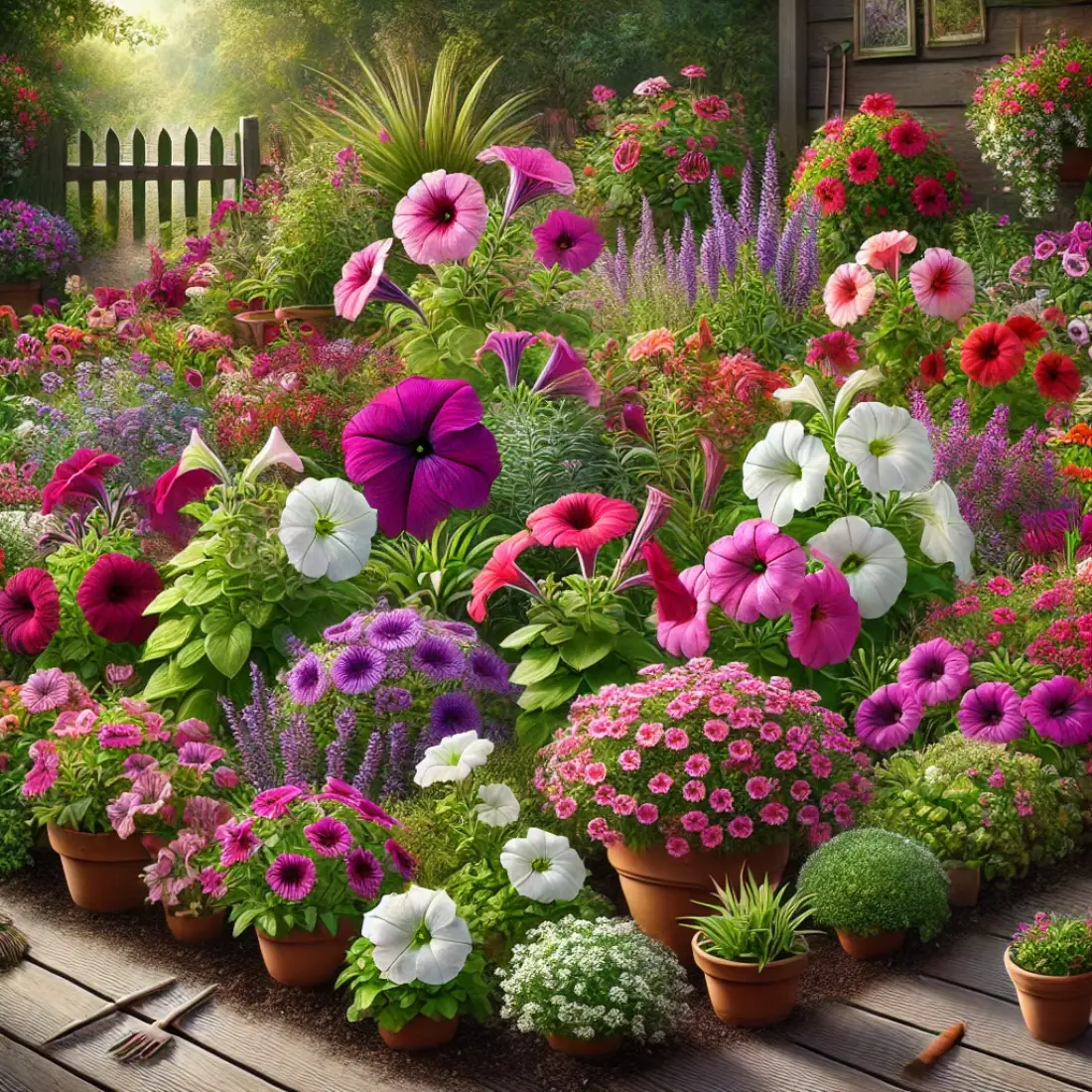Daisies are beloved flowers known for their bright yellow centers and white petals, though they come in various colors. These resilient blooms belong to the Asteraceae family and can thrive in diverse climates, making them a popular garden choice worldwide.
Historically, daisies were valued not only for their beauty but also for their medicinal uses. Today, they symbolize simplicity and joy, often featured in literature and art. Their low-maintenance nature makes them perfect for gardeners of all experience levels.
- Types of Daisies: Popular varieties include Shasta, Gerbera, Oxeye, Marguerite, and African daisies.
- Planting Daisies: Best planted in well-drained soil and sunny locations, either from seeds or seedlings.
- Caring for Daisies: Regular watering, mulching, fertilizing, and pruning are essential.
- Disease and Pest Management: Common issues include powdery mildew and aphids; proper care can prevent these.
- Seasonal Care: Ensure proper maintenance throughout the year, especially in spring and summer.
- Propagation Methods: Easily propagated through division, stem cuttings, or seeds.
- Garden Design: Ideal for companion planting, landscaping, and container gardening.
Types of Daisies
Daisies come in a variety of species, each bringing its unique charm to gardens and landscapes. Here are some of the most popular types of daisies:
Shasta Daisies: Leucanthemum × superbum, commonly known as Shasta daisies, are among the most popular. They feature large, white petals surrounding a bright yellow center and can grow up to three feet tall. Shasta daisies are perennials, meaning they return year after year, providing consistent beauty in gardens.
Gerbera Daisies: Gerbera jamesonii, or Gerbera daisies, are known for their vibrant and diverse colors, including pink, red, yellow, orange, and white. They are often used in bouquets and floral arrangements due to their striking appearance. Gerbera daisies can be grown as perennials in warmer climates but are typically treated as annuals in cooler regions.
Oxeye Daisies: Leucanthemum vulgare, or Oxeye daisies, are wildflowers that have naturalized in many regions. They have smaller flowers than Shasta daisies and can spread quickly, making them ideal for naturalistic garden settings. They are hardy and can thrive in less fertile soils.
Marguerite Daisies: Argyranthemum frutescens, also known as Marguerite daisies, are popular for their delicate, feathery foliage and profusion of blooms. These daisies come in white, pink, and yellow and are commonly grown as annuals in cooler climates, although they are perennial in milder areas.
African Daisies: Osteospermum spp., or African daisies, are known for their vibrant and unusual color combinations, often featuring blue or purple centers. They are well-suited for sunny, dry conditions and can be grown as perennials in warm climates or annuals in cooler areas.
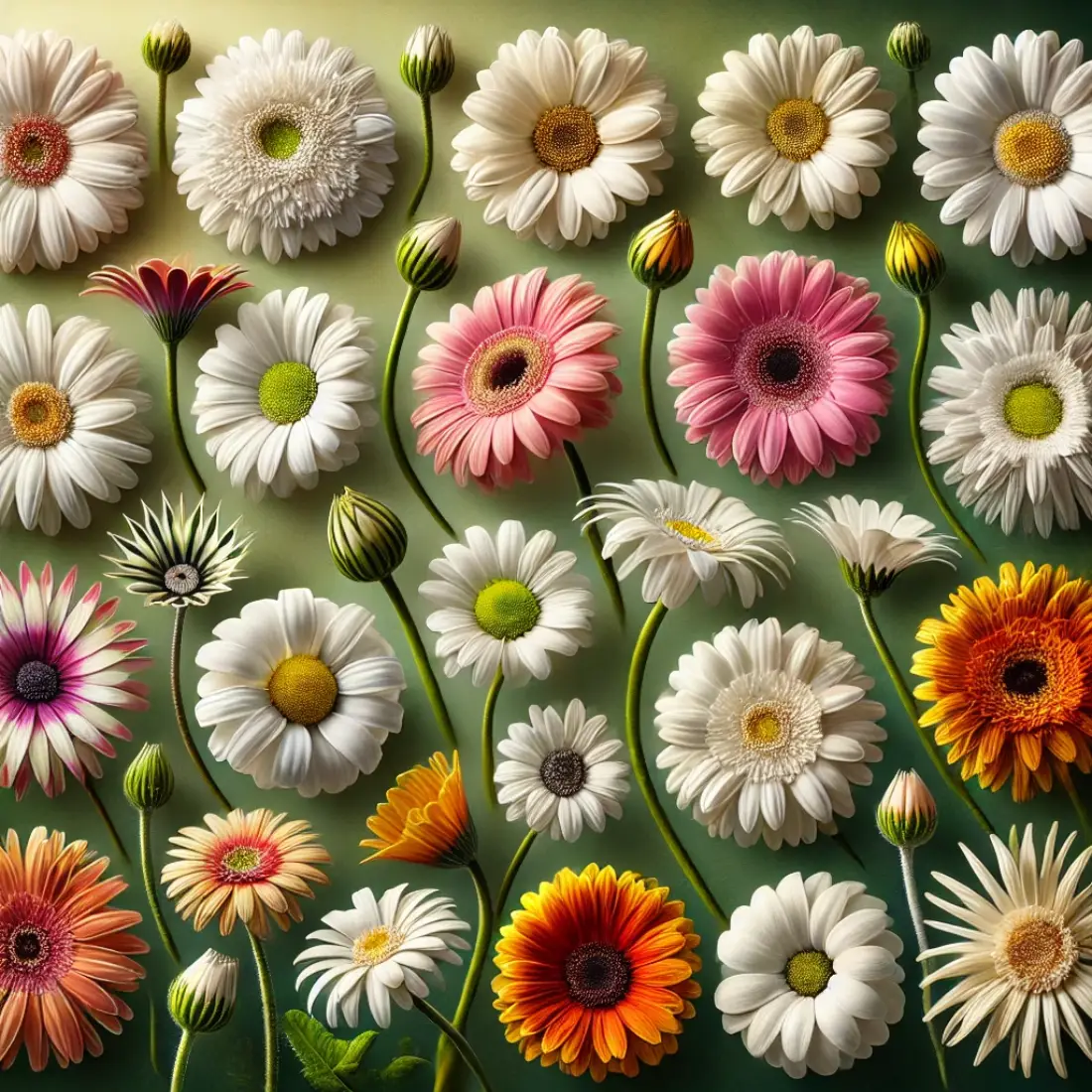
Selecting the Right Daisy Variety
Choosing the right daisy variety for your garden depends on several factors, including climate, soil, and personal preference.
Climate Considerations: Some daisies, like Shasta and Oxeye, thrive in a range of climates and can withstand cold winters. In contrast, Gerbera and African daisies prefer warmer temperatures and may need to be grown as annuals in cooler regions.
Soil and Light Requirements: Daisies generally prefer well-drained soil and full sunlight. For gardens with poor soil, Oxeye daisies are a hardy choice. If you have rich, fertile soil, Shasta daisies will flourish.
Garden Aesthetics: Consider the color and size of the blooms. Gerbera daisies offer a variety of vibrant colors, while Marguerite and African daisies add unique textures and hues. Think about the overall look you want to achieve in your garden.
Planting Daisies
When to Plant Daisies
Daisies are best planted in early spring after the last frost has passed. This allows them to establish roots and grow vigorously during the warmer months. In mild climates, daisies can also be planted in the fall, giving them a head start in the spring.
Choosing the Right Location
Daisies thrive in full sunlight, requiring at least six hours of direct sunlight daily. Choose a location in your garden that receives plenty of sun and has good air circulation. Avoid areas that are heavily shaded or have poor drainage, as these conditions can lead to root rot and other issues.
Soil Preparation
Daisies prefer well-drained soil that is rich in organic matter. Before planting, loosen the soil to a depth of about 12 inches and mix in compost or well-rotted manure to improve soil fertility and drainage. If your soil is heavy clay, consider adding sand or perlite to enhance drainage. Testing the soil pH is also beneficial; daisies grow best in slightly acidic to neutral soil (pH 6.0-7.0).
Sowing Seeds vs. Planting Seedlings
Daisies can be grown from seeds or seedlings. Sowing seeds is more economical and allows for a greater variety of plants, while seedlings provide a quicker start and are easier for beginners.
Step-by-Step Planting Guide
- Prepare the Soil: As mentioned, ensure the soil is well-prepared with compost and proper drainage.
- Sowing Seeds: Scatter the seeds evenly over the prepared soil and cover them lightly with a thin layer of soil, about 1/8 inch deep. Press the soil gently to ensure good seed-to-soil contact.
- Planting Seedlings: Dig holes that are slightly larger than the root balls of the seedlings. Space the holes 12-18 inches apart to give each plant room to grow. Place the seedlings in the holes and backfill with soil, pressing gently to remove air pockets.
- Watering: Water the seeds or seedlings thoroughly after planting to help settle the soil and initiate root growth.
Watering After Planting
After planting, daisies require consistent moisture to establish roots. Water the plants regularly, keeping the soil evenly moist but not waterlogged. In the first few weeks, water every few days, then reduce the frequency as the plants become established. Mulching around the plants can help retain soil moisture and suppress weeds.
Caring for Daisies
Caring for daisies involves a few key practices to ensure they remain healthy and vibrant throughout the growing season.
Mulching
Mulching is a vital practice for maintaining healthy daisies. By applying a layer of mulch around the base of your plants, you can significantly enhance their growth and overall health.
- Benefits of Mulching: Mulch helps retain soil moisture, suppresses weed growth, regulates soil temperature, and adds organic matter to the soil as it decomposes.
- Types of Mulch: Use organic mulches such as straw, wood chips, bark, or compost. These materials break down over time, enriching the soil with nutrients.
- Application: Apply a 2-3 inch layer of mulch around the base of the daisies, keeping it a few inches away from the stems to prevent rot. Replenish the mulch as needed to maintain its depth, especially after heavy rains or strong winds.
Organic Fertilizing
Organic fertilizing is a natural way to provide essential nutrients to daisies, promoting robust growth and abundant blooms without harming the environment.
- Compost: Compost is an excellent organic fertilizer that provides a balanced mix of nutrients. Apply a 1-2 inch layer of compost around the base of the plants in early spring, gently working it into the top few inches of soil. This not only feeds the daisies but also improves soil structure and water retention.
- Well-Rotted Manure: Manure from herbivores (e.g., cows, horses) is rich in nutrients and beneficial microorganisms. Ensure the manure is well-rotted to avoid burning the plants. Spread a thin layer around the daisies in early spring, mixing it lightly into the soil.
- Organic Fertilizer Mixes: You can also use commercially available organic fertilizers, which are formulated to provide balanced nutrition. Look for products labeled for flowers or perennials, and follow the application instructions on the package. These fertilizers often contain a mix of composted materials, bone meal, blood meal, and other natural ingredients.
Application Timing: Apply organic fertilizers in early spring as new growth begins and again in midsummer to support continued blooming. Avoid over-fertilizing, as excessive nutrients can lead to lush foliage at the expense of flowers.
Pruning and Deadheading
Regular pruning and deadheading (removing spent flowers) are crucial for promoting continuous blooming and preventing the plants from becoming leggy. Use sharp, clean scissors or pruners to cut off faded blooms just above the nearest set of healthy leaves. This practice encourages the plant to produce new flowers and maintains a tidy appearance.
In late fall, after the first frost, cut back the foliage to about 1-2 inches above the ground. This helps prevent diseases and prepares the plants for winter dormancy. In regions with harsh winters, consider applying a layer of mulch or straw over the plants to protect them from freezing temperatures.
Spring and Summer Care
In spring, as new growth begins, apply a layer of compost or organic fertilizer to provide essential nutrients. Ensure your daisies receive consistent watering, especially during dry spells, and mulch around the base to retain soil moisture and suppress weeds. Regularly deadhead spent blooms to encourage continuous flowering and maintain a tidy appearance.
Fall and Winter Preparation
In fall, gradually reduce watering as the plants prepare for dormancy. After the first frost, cut back the foliage to about 1-2 inches above the ground. Apply a thick layer of mulch or straw over the plants to protect the roots from freezing temperatures. In regions with mild winters, Marguerite and African daisies may remain evergreen, requiring only minimal pruning.
Propagating Daisies
Propagating daisies allows you to expand your garden or share plants with friends. There are several effective methods to propagate daisies:
- Division: Division is the easiest and most reliable method. In early spring or fall, dig up an established daisy plant. Gently separate the root clumps into smaller sections, ensuring each section has several healthy shoots and roots. Replant the divisions immediately at the same depth they were growing before, and water them thoroughly.
- Stem Cuttings: Stem cuttings can be taken in late spring or early summer. Cut a 4-6 inch healthy stem just below a leaf node. Remove the lower leaves and dip the cut end in rooting hormone. Plant the cutting in a pot filled with a well-draining mix of perlite and peat. Keep the soil moist and place the pot in indirect sunlight. Roots should develop in a few weeks, after which you can transplant the new plant outdoors.
- Seed Propagation: Starting daisies from seeds is economical and allows for a large number of plants. Sow seeds indoors 6-8 weeks before the last frost date. Use a seed-starting mix and lightly cover the seeds with soil. Keep the soil moist and maintain a temperature of 65-70°F. Once seedlings have several true leaves, harden them off and transplant them outdoors.
Pest and Disease Management for Daisies
Aphids
Solution: Introduce natural predators like ladybugs or lacewings, which feed on aphids. Alternatively, spray the plants with a mixture of water and a few drops of dish soap or neem oil to deter aphids.
Slugs and Snails
Solution: Use diatomaceous earth around the base of plants to create a barrier. Handpick slugs and snails during the evening or use beer traps by burying shallow containers filled with beer to attract and drown them.
Spider Mites
Solution: Increase humidity around the plants by misting them regularly. Introduce predatory mites or spray the plants with a mixture of water and neem oil to control spider mite populations.
Powdery Mildew
Solution: Improve air circulation around plants by spacing them appropriately and pruning overcrowded growth. Apply a homemade fungicide made from 1 tablespoon of baking soda, 1 teaspoon of liquid soap, and 1 gallon of water. Spray the solution on affected plants weekly.
Root Rot
Solution: Ensure good drainage by amending the soil with organic matter like compost. Avoid overwatering and let the soil dry out between waterings. If root rot is detected, remove affected plants and improve soil conditions.
Leaf Spot
Solution: Remove and dispose of infected leaves to prevent the spread of the disease. Apply a copper-based fungicide or a mixture of 1 part milk to 2 parts water as a natural remedy. Spray the solution on affected plants weekly.
Troubleshooting Common Problems
Yellowing Leaves
- Cause: Overwatering or poor drainage.
- Solution: Ensure soil is well-drained and not waterlogged. Water only when the top inch of soil is dry. Improve soil drainage by adding compost or sand.
Wilting Plants
- Cause: Underwatering or root rot.
- Solution: Water deeply and regularly, especially during dry spells. Check for root rot by examining roots; healthy roots should be white and firm. If root rot is present, remove affected plants and improve soil drainage.
Stunted Growth
- Cause: Poor soil nutrition or compacted soil.
- Solution: Enrich soil with compost or organic fertilizer. Loosen compacted soil to improve root growth. Ensure the soil pH is slightly acidic to neutral (pH 6.0-7.0).
No Blooms
- Cause: Excessive nitrogen or insufficient sunlight.
- Solution: Use balanced or phosphorus-rich fertilizers to promote blooming. Ensure daisies receive at least 6 hours of sunlight daily.
Leggy Growth
- Cause: Insufficient sunlight or overcrowding.
- Solution: Move daisies to a sunnier location if possible. Thin out plants to provide adequate space and light.
FAQs about Growing Daisies
How much sunlight do daisies need?
Daisies require at least six hours of direct sunlight daily to thrive and produce abundant blooms.
How often should I water my daisies?
Water daisies deeply once or twice a week, allowing the soil to dry slightly between waterings. Avoid waterlogging the soil.
What type of soil is best for daisies?
Daisies prefer well-drained, slightly acidic to neutral soil (pH 6.0-7.0) rich in organic matter.
Can daisies be grown indoors?
Yes, daisies can be grown indoors in containers. Ensure they receive plenty of sunlight, preferably from a south-facing window.
How long do daisies live?
Perennial varieties like Shasta daisies can live for several years, while annual varieties, such as some Gerbera daisies, complete their life cycle in one growing season.
When is the best time to plant daisies?
The best time to plant daisies is in early spring after the last frost or in the fall in mild climates.
How do I prevent powdery mildew on my daisies?
To prevent powdery mildew, ensure good air circulation, avoid overhead watering, and apply a homemade fungicide with baking soda and water.
What are the best organic fertilizers for daisies?
Compost, well-rotted manure, and balanced organic fertilizer mixes are excellent choices for daisies.
How do I propagate daisies?
Daisies can be propagated by division, stem cuttings, or seed sowing. Each method is effective and depends on your preference.
Why are my daisies not blooming?
Daisies may not bloom due to excessive nitrogen in the soil, insufficient sunlight, or overcrowding. Ensure balanced fertilization, adequate sunlight, and proper spacing.

